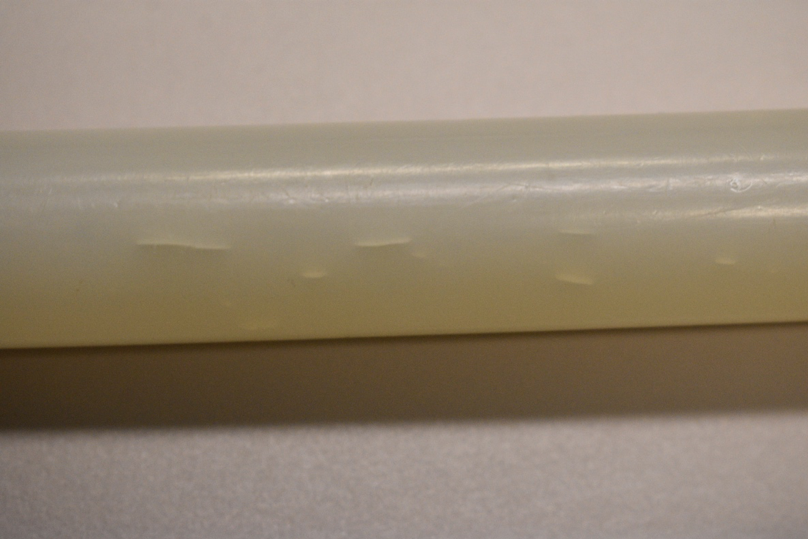
By: Jonathan Simon on December 9th, 2019
The Influence of UV Light on Plastic Plumbing Systems
We often get asked about the influence of ultraviolet (UV) light on plastic plumbing systems. The answer to this question, like many others, depends on the type of plastic being used. Different types of plastics have different chemical compositions and those differences affect how they react to UV light exposure.
First, let’s clarify what we are talking about. UV light is short-wavelength light that is not visible to the human eye. It’s most commonly associated with sunlight. However, it is also emitted by artificial light sources, particularly fluorescent lights. While the percent of UV light in fluorescents is much lower than sunlight, prolonged exposure can have an impact on people and certain types of piping.
UV Light and CPVC Piping
Pipes constructed of chlorine-resistant CPVC will show visible signs of exposure to UV light in the form of discoloration. These products may lose some of their impact resistance, but UV light does not affect the pipe’s pressure-bearing capability.
It’s perfectly fine to use CPVC that is showing signs of UV exposure or to keep discolored pipe in service. Just understand when working with CPVC piping that is showing signs of UV exposure that it has lost some impact resistance and avoid physically abusing it. Follow cut-in procedures for aged pipe by using a C-style tubing cutter.
Still, it’s recommended to limit direct exposure to UV light. Whenever possible, CPVC pipe should not be stored in direct sunlight prior to installation and CPVC pipe that is directly exposed to sunlight following installation should be painted with a compatible latex paint to minimize the impact of UV light on the piping material.
UV Light and PEX Piping
In piping constructed of PEX, UV light exposure is more of a concern. UV light acts as a strong catalyst for the oxidation process within these materials. When PEX piping is exposed to UV light, it consumes the chlorine-inhibiting anti-oxidants which protect the pipe from chlorine induced oxidation. As these chlorine inhibitors get consumed, the piping is left vulnerable to attack from chlorine in the water.
PEX piping that is indoors is also susceptible to this oxidation. One study found that UV exposure from fluorescent lights for eight hours is equivalent to one minute of sun exposure. According to at least one PEX manufacturer’s installation instructions, contractors are advised “Do not install … within 5 ft. of direct view from fluorescent and LED lighting without protecting the pipe with a UV-blocking material.”
Plumbers that encounter pinhole PEX leaks and failures in PEX plumbing systems may attribute those failures to UV exposure. Technically, that’s not correct. UV light doesn’t actually cause the failure but consumes antioxidants in the material, accelerating the rate chlorine degradation that would have otherwise still occurred. The failures aren’t “UV failures,” per se but chlorine failures that may or may not have been accelerated by UV exposure. They would have occurred with or without UV light, just in a different timeframe.

This PEX failure is the result of chlorine-induced degradation. Contrary to popular belief,
UV itself does not cause failures in PEX, but it can accelerate the rate of chlorine failures.
Early warning signs of chlorine induced degradation in PEX piping that has been in service can be observed in the “popcorning” of the pipe surface. Exposure to UV following installation can complicate warranty claims; All manufacturers exclude UV exposure in their warranties, along with chemically incompatible water conditions.
While UV light affects all plastic piping to some degree, in PEX it can amplify the inherent incompatibility of the material with chlorine and chlorine-based compounds used in water treatment.
CPVC, such as FlowGuard Gold® pipes and fittings, is impervious to chlorine, with or without UV light exposure. That makes it less sensitive to UV light and gives you one more reason to make the switch to FlowGuard Gold pipes and fittings.



